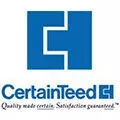If you’ve never heard of retrofit insulation before, it means adding insulation or installing new insulation into your existing home. Retrofit insulation is often also referred to as re-insulation.
This method is popular for older homes with outdated or degraded insulation, but really, any building can benefit from a good old retrofit.
Here are the types of materials you can use for retrofitting your home, the usual areas that require the most attention and what the process looks like.
Most Common Insulation Materials Used To Retrofit Homes
When it comes to retrofit insulation, there are several options. The goal? Making your home more energy-efficient. You’ll want to choose insulation that delivers optimal energy efficiency within your budget.
Here are some common types to consider:
- Fiberglass: Known for its affordability and easy installation, fiberglass insulation has an R-value between 2.2 and 2.7 per inch. While it does contain some recycled content, it’s not the greenest choice.
- Cellulose: Made from up to 80% recycled material, cellulose insulation has an R-value of about 3.2 to 3.8 per inch, making it an eco-friendly and efficient choice. It’s more expensive than fiberglass but offers superior performance.
- Spray foam: Spray foam insulation boasts an impressive R-value of up to 6.5 per inch, providing excellent thermal resistance. However, its eco-friendliness is questionable due to the chemicals used in its production, and it’s typically on the pricier side.
- Radiant barrier: This is a type of thermal insulation that reduces heat gain in hot climates and retains heat in colder ones. Its cost is comparable to fiberglass and cellulose, but it’s not as eco-friendly due to its aluminum content.
What Are the Most Important Areas To Insulate in Your Home?
When retrofitting your home, certain areas are high-priority insulation zones. These include:
- Attic: The attic is a major culprit for heat loss in your home. In winter, warm air rises and can escape through your attic, while in summer, heat from the sun can turn your attic into an oven, radiating heat into your living space. Insulating your attic is a key step toward maintaining a comfortable home temperature year-round.
- Walls: Did you know that up to 35% of heat loss in your home occurs through the walls? Insulating your walls effectively traps heat inside in the winter and repels heat in the summer, making your home more energy-efficient and comfortable.
- Floors: Ever walked across a cold floor in the middle of winter? Not fun. While they’re not as crucial as attics or walls, insulating floors, especially those above unheated spaces like garages or basements, can help enhance your home’s overall comfort.
- Basement or crawl space: These areas are often neglected, but insulating them can prevent ground moisture from seeping into your home, reduce drafts and help keep your home temperature more consistent.
What Is the Retrofit Process?
So, how does retrofit insulation work? It’s pretty similar to new construction insulation installation. The standard re-insulation process looks like this:
- Inspection: The first step in the retrofit process is a thorough inspection of your existing insulation. Insulation professionals assess the condition and performance of your current insulation to determine what needs to be done.
- Removal (if necessary): If the existing insulation is wet, damaged or infested with pests, it will need to be removed before new insulation can be added.
- Adding new insulation: Once the old insulation has been dealt with (either removed or deemed fit to stay), new insulation can be added. The insulation material is chosen based on a variety of factors, including your home’s specific needs, the local climate and your budget.
- Post-installation check: After the new insulation is in place, a final check is conducted to ensure everything is properly installed and performing as it should.
- Follow-up: Professionals will provide guidance on any necessary maintenance or follow-up measures to keep your insulation performing optimally.
Benefits of Retrofitting Your Home or Commercial Property
Improved Comfortability and Climate
The benefits of retrofitting are instantaneous. You can immediately notice an improved comfortability in your home or building. With a better level of thermal efficiency, you’ll rely less on your A/C during the summer or heating in the winter months as insulation acts as a thermal barrier, preventing heat transfer into and out of your home. However, year-round comfortability is only the beginning.
Cost Savings of Retrofit Insulation
Next, you’ll see lower energy costs as you continue to use your A/C or heaters less than before. These cost savings are not insignificant, as Energy Star estimates an average of 15% savings on bills with the addition of new (or retrofitted) insulation and air sealing for homes. Your investment in insulation will be recouped quickly with the amount of savings for years to come.
Environmental Benefits Of Retrofit
Insulation also helps improve the carbon footprint of homes and buildings. Insulation, especially Cellulose and Denim Insulation which are made using recycled materials, are inherently eco-friendly as you use less electricity and gas, having a net positive impact on sustainability.
Embrace the cozy, energy-efficient vibes that retrofit insulation can bring to your home by calling our BPI-certified insulation experts today.
Call 916-441-6200 today to schedule your retrofit insulation service for your Sacramento home.


















